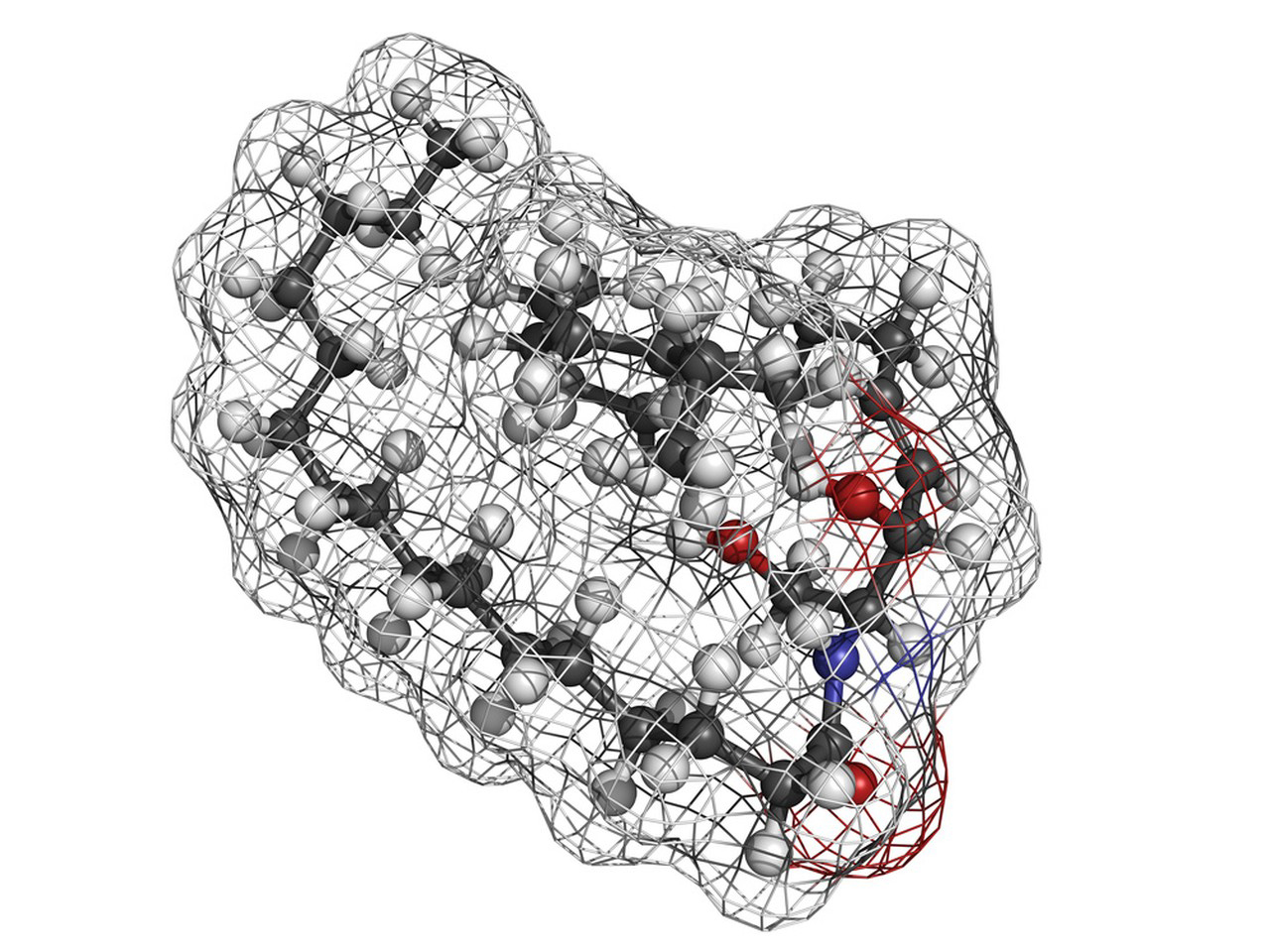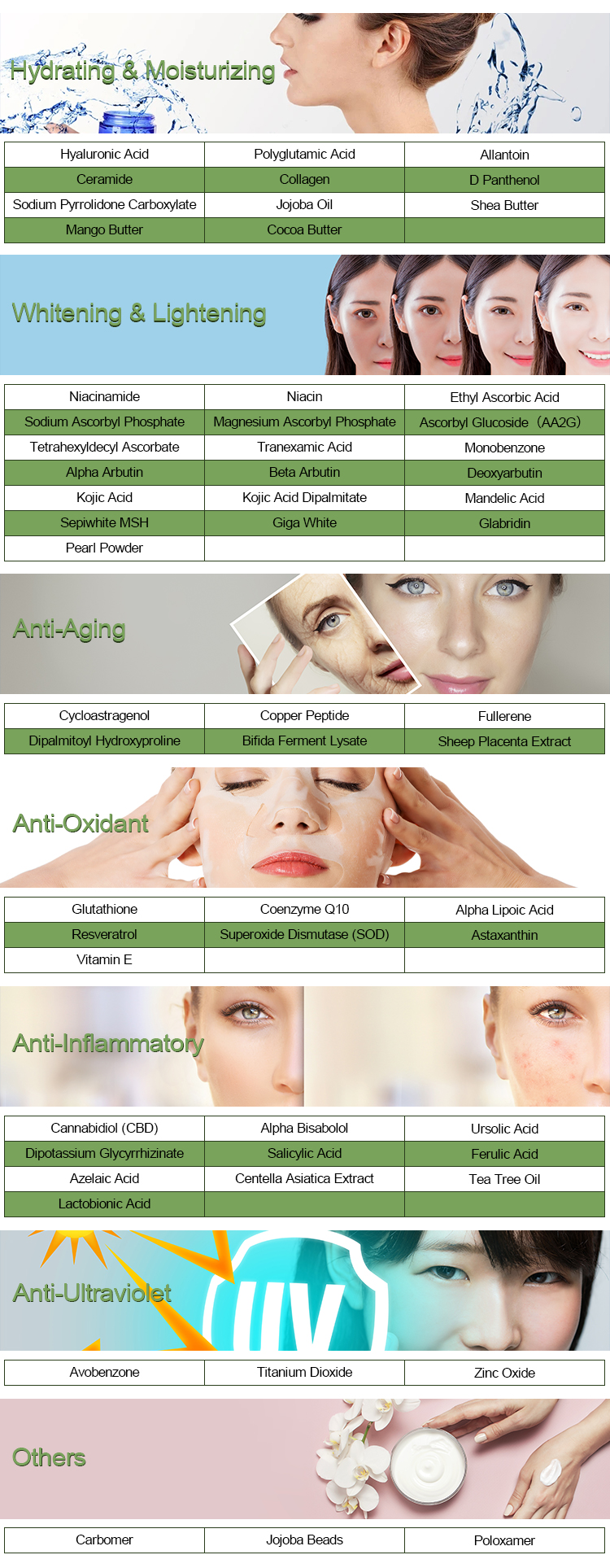Ceramide is a type of lipid molecule found in the stratum corneum, which is the outermost layer of the skin. They play a crucial role in maintaining the barrier function and overall health of the skin. Ceramides are essential for preventing water loss, protecting against environmental factors, and maintaining skin integrity. Different types of ceramides, such as Ceramide 1, Ceramide 2, Ceramide 3, and Ceramide 6, contribute to these functions in various ways.

Here’s a breakdown of the differences and functions of Ceramide 1, Ceramide 2, Ceramide 3, and Ceramide 6:
Ceramide 1: Ceramide 1 is a subclass of ceramides and is considered one of the primary ceramides present in the stratum corneum. It helps to form the lipid matrix that maintains the skin barrier. Ceramide 1 contributes to skin hydration, moisture retention, and protection against external irritants.
Ceramide 2: Ceramide 2 is another important subclass of ceramides. It also contributes to the formation of the lipid barrier in the stratum corneum. Ceramide 2 helps to improve the skin’s moisture retention and barrier function, which is important for preventing dryness and maintaining skin health.
Ceramide 3: Ceramide 3 is a vital component of the skin’s barrier function. It helps to maintain proper hydration levels by preventing excessive water loss from the skin’s surface. Ceramide 3 also contributes to the overall integrity and protection of the skin.
Ceramide 6: Ceramide 6 is part of the ceramide family and plays a role in supporting the skin barrier’s function. It helps to enhance the barrier’s effectiveness in preventing water loss and protecting the skin from environmental stressors. Ceramide 6 is important for maintaining healthy, hydrated skin.
Collectively, these different types of ceramides work together to maintain the skin’s barrier function, hydration, and overall health. When the levels of ceramides are imbalanced or depleted, it can lead to skin issues such as dryness, sensitivity, and increased susceptibility to environmental damage. Skincare products often include ceramides to help restore and maintain the skin’s natural barrier function, promoting healthier and more resilient skin.
Difference between Ceramide and nicotinamide
Ceramide and nicotinamide are two distinct compounds with different roles and functions in the body, particularly in the context of skin health and skincare. Here’s a brief overview of each:
Ceramide:
Ceramide is a type of lipid (fat) molecule found in the outermost layer of the skin, known as the stratum corneum. They play a crucial role in maintaining the skin’s barrier function, which helps prevent excessive water loss, protects against environmental stressors, and maintains overall skin hydration. Ceramides are essential for maintaining healthy, moisturized skin and are often referred to as the “glue” that holds skin cells together.
Ceramide-rich skincare products are used to strengthen the skin barrier, improve moisture retention, and help manage conditions such as dry skin, eczema, and psoriasis. They can be found in various topical formulations, including creams, lotions, and serums.

Nicotinamide (Niacinamide):
Nicotinamide, also known as niacinamide, is a form of vitamin B3 (niacin). It is a water-soluble vitamin that is involved in a range of cellular processes, including energy production and DNA repair. In the context of skincare, nicotinamide has been studied for its numerous benefits:
- Anti-inflammatory: Nicotinamide has anti-inflammatory properties and can help calm irritated skin, making it suitable for individuals with sensitive or redness-prone skin.
- Oil Regulation: It can help regulate sebum production, potentially benefiting people with oily or acne-prone skin.
- Pigmentation: Nicotinamide may help reduce the appearance of dark spots and uneven skin tone by inhibiting the transfer of pigment within the skin.
- Barrier Function: Similar to ceramides, nicotinamide can contribute to maintaining a healthy skin barrier and reducing moisture loss.
- Antioxidant: Nicotinamide has antioxidant properties that help protect skin cells from oxidative stress.
Nicotinamide is commonly found in various skincare products, such as moisturizers, serums, and spot treatments.
In summary, while both ceramide and nicotinamide play roles in skin health and skincare, they have distinct functions. Ceramides primarily focus on maintaining the skin’s barrier function and hydration, while nicotinamide offers various benefits including anti-inflammatory, oil regulation, pigmentation control, and antioxidant properties. It’s important to note that skincare products often contain a combination of ingredients to address different skin concerns effectively.
